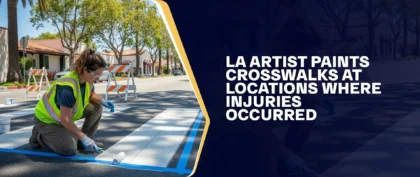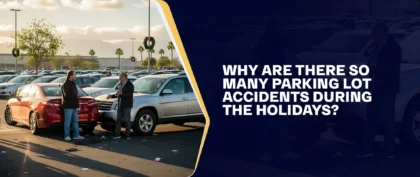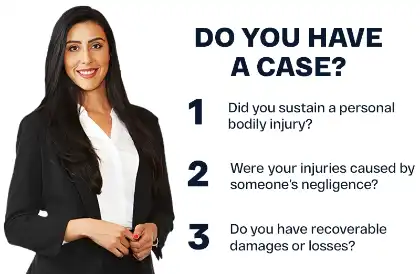Table of Contents
Commercial trucks power our consumer-driven economy by delivering the goods we want and need. As demand grows, so too does the number of semi-trucks on our roadways. The fact is that, if you drive, you share the road with big rigs. Knowing the safety ins and outs can help keep you safer out there. Commercial vehicle accidents involving semis are among the deadliest on our highways. If you or someone you love has been injured in a tractor-trailer accident, consider consulting with an experienced California truck accident attorney.
Did You Know? 7 Facts About Truckers
- A truck driver sits about six feet higher than average motorists.
- Truck drivers have a panoramic view for miles ahead and can see across the top of traffic.
- Truck drivers are trained to look in their mirrors every 5 seconds.
- If you cannot see the truck driver’s face in their left-side mirror, they cannot see you.
- Large trucks have several blind spots known as “no-zones” on all four sides.
- If you are following a truck closer than “4 seconds,” you are in their rear No-Zone.
- Never pass a big rig, semi-truck, 18-wheeler, or commercial truck on the left side.
Commercial truck accident lawyers can examine these factors and investigate whether driver negligence or other causes contributed to the accident.
Commercial Trucks Require Significantly More Stopping Distance
As experienced drivers, we are accustomed to bringing our vehicles to safe and complete stops within relatively short distances; however, the same is not true for big rigs. Their immense size and weight result in significantly longer stopping times and distances. The Federal Motor Carrier Safety Administration (FMCSA) shares some significant information regarding commercial trucks and their stopping distances:
- A semi that is fully loaded and traveling under good conditions at highway speeds requires a distance of almost two football fields to come to a complete stop. Without a safe distance, these vehicles may cause commercial truck accidents.
- This stopping distance increases with heavier loads and with bad road conditions, including the effects of inclement weather. Truck accidents may happen when drivers don’t adapt their speed or driving style to changing weather conditions.
When semi-trucks are in your midst, factor their increased stopping distances into your driving decisions. Never cut sharply in front of a semi. Instead, wait until you can see its entire cab in your rearview mirror before you pull back into the truck’s lane. However, if a collision occurred through no fault of your own, it can be helpful to consult a commercial vehicle accident attorney.
Watch Out For The No-Zones Around Large Commercial Vehicles
Every vehicle has one or two blind spots that make it difficult for us, as drivers, to see whatever is within them. This is why it’s so important to check before changing lanes physically. Commercial truck drivers, on the other hand, experience wide stretches of blind spots or “no zones” all the way around their rigs. This includes in front of the truck’s cab and behind its trailer, so make it your policy never to crowd a semi.
Truck drivers sit high above the roadway, which can appear to give them a bird’s-eye view of traffic, but that’s not really how it works. If you are in one of an 18-wheeler’s many no-zones, the trucker cannot see you, and that puts you in a dangerous position. Never drive near a semi-truck if possible. The trucker’s right-hand side harbors the largest blind spot, and this makes passing on the right exceedingly dangerous. The risk of a semi-truck accident may be higher in such situations.
Truck-Only Lanes In California
What are truck-only lanes? Truck-only lanes are lanes assigned for the use of trucks. The goal of truck-only lanes is to separate trucks from other mixed-flow traffic, thereby improving safety and stabilizing traffic flow. Very few truck-only lanes exist in the United States. Most states limit trucks to certain lanes, but likewise allow all vehicles to use the same lanes. California has the following two truck-only lanes:
Northbound and southbound I-5 in Los Angeles County at the State Route 14 split. Looking in the north direction, the truck lanes start as two roads: NB at LA County postmile C043.925 and SB at C043.899. The NB and SB roads meet at postmile C044.924 and continue together up to postmile C046.351.
The total lengths are 2.426 miles (NB) and 2.452 miles (SB). The purpose of these truck lanes is to separate slower-moving trucks from the faster general traffic on the grade. After building the new I-5 alignment, the original alignment was used for the truck-only lanes. This truck-only facility has been in place for about 30 years.
Southbound I-5 in Kern County at the State Route 99 junction near the Grapevine. This truck lane starts on Route 99 at Kern County postmile L000.629 (the equivalent of I-5 postmile R015.838) and finishes on I-5 at postmile R015.492. The total length is 0.346 miles. The idea of this design is to place the truck merge farther downstream of the automobile traffic merge of I-5 & 99.
Large Commercial Trucks Are More Difficult To Maneuver Than Smaller Passenger Vehicles
The vehicles we drive are capable of maneuvering smoothly through various traffic situations, but it’s essential to recognize that commercial trucks are far too large and cumbersome to do the same. The fact is that 18-wheelers need time and space to perform nearly any driving task, including changing lanes, stopping, and making turns.
If you crowd a commercial truck when it signals its intention to make a move, you risk an accident; instead, back off and allow the truck the space it needs to maneuver safely. Never try to rush past a semi-truck or a big rig when it’s preparing to make a turn or to change lanes. The few seconds you may save are simply not worth the immense risk of being in a big-rig truck accident or semi-truck collision.
Tips For Driving Safely Around Large Commercial Trucks
You’ve been driving a while, and you know the rules of the road. When it comes to sharing the road with big rigs, however, it’s worth reviewing the safety basics:
- Drive Defensively — You learned that driving defensively is important in your first driver’s ed. class, and it remains just as true today. Driving defensively is all about paying attention to what’s going on around you, remaining alert and focused, factoring in the road conditions, and considering the effects of weather. It also involves allowing as much space as possible between you and other vehicles, especially semi-trucks.
- Pass Quickly — It’s never a good idea to linger as you pass another vehicle, and this is especially true when it comes to 18-wheelers. Because of their size and weight, commercial trucks are often unable to maintain consistent speeds. As such, it’s not uncommon to need to pass a lot of trucks. Don’t attempt to overtake a truck until it’s clear to do so, and then get the job done. Your goal should always be to spend as little time next to a semi-truck as possible, so pass swiftly and with care. However, if the commercial driver’s behavior appeared unusual at the time of the accident, it may be worth consulting an 18-wheeler accident attorney to explore your legal options.
- Use Your Blinkers Every Single Time — Driving is a complicated task that demands a great deal of attention. When you use your turn signals to let others (including truckers) know your intentions, it helps keep everyone on the roadway safer. Make using your turn signals a habit that you never break.
If You’ve Been Injured In A Truck Accident, Consult An Experienced California Truck Accident Lawyer
Commercial truck accidents are exceedingly dangerous and are often devastating. The skilled legal team at Arash Law in California is dedicated to helping you pursue a favorable outcome for your claim.
Our experienced California truck accident attorneys and car accident lawyers are available 24/7 to answer your questions. You can call us at (888) 488-1391 to schedule a free initial consultation. We serve injured victims in the counties of Los Angeles, San Bernardino, Fresno, Sacramento, San Francisco, San Diego, San Jose, Riverside, Bakersfield, Orange County, and the rest of California.





























